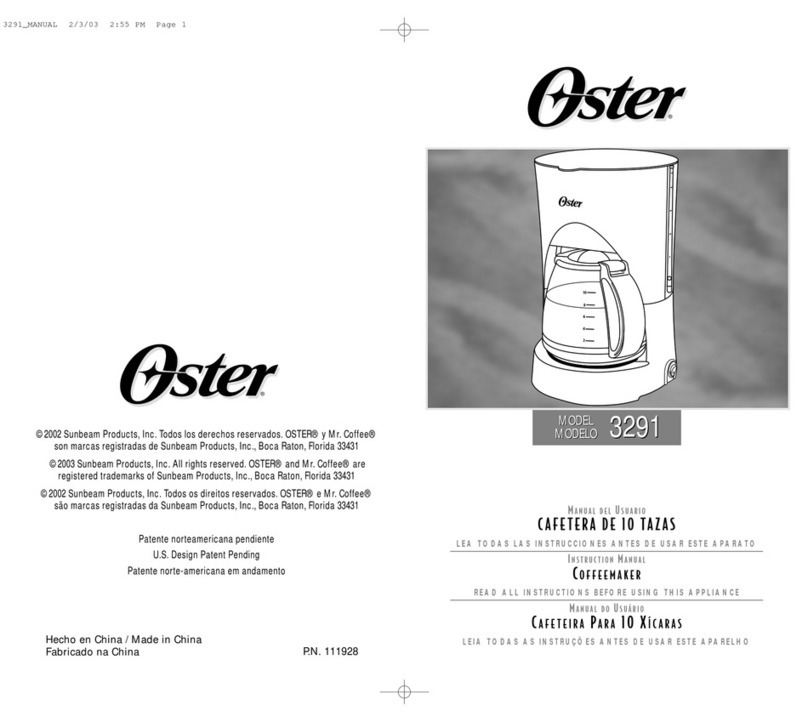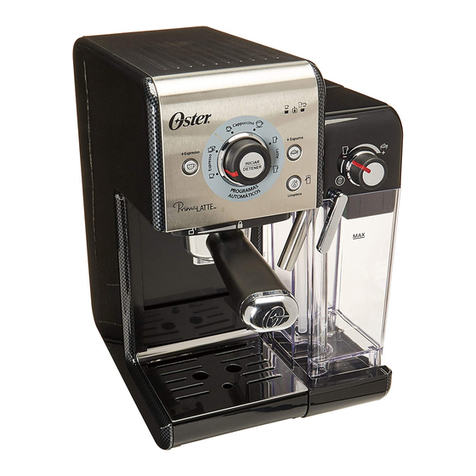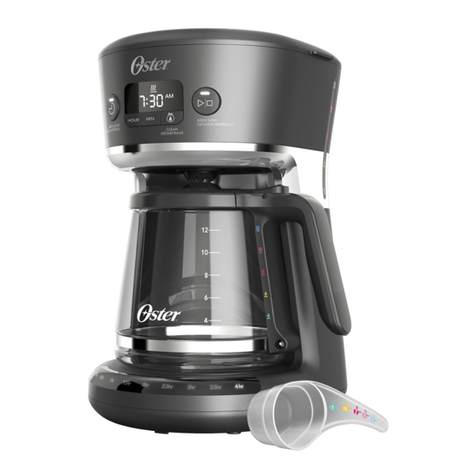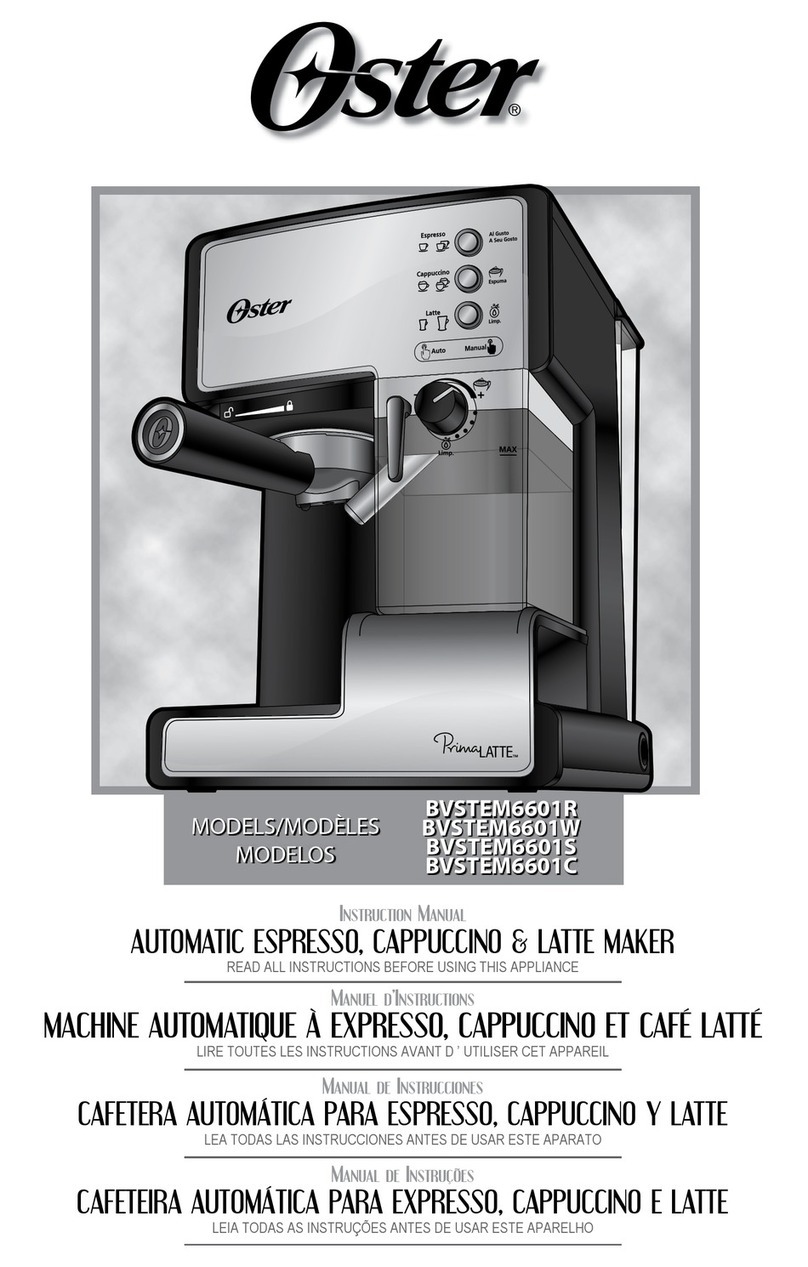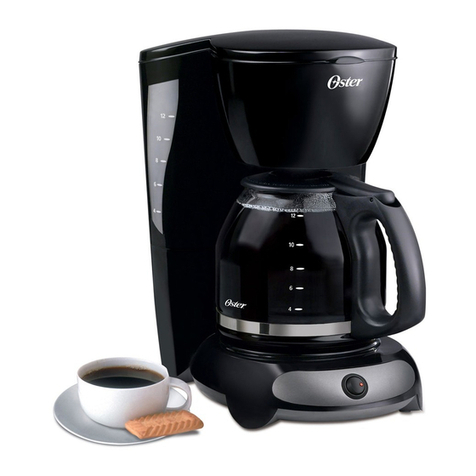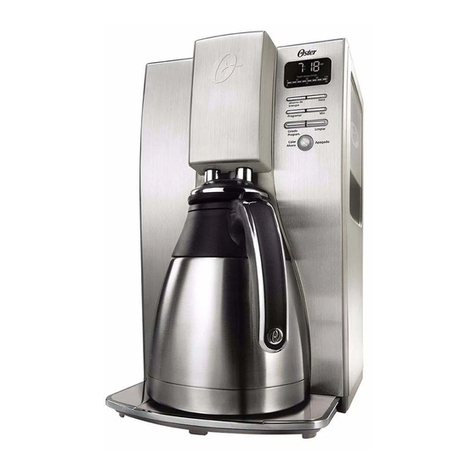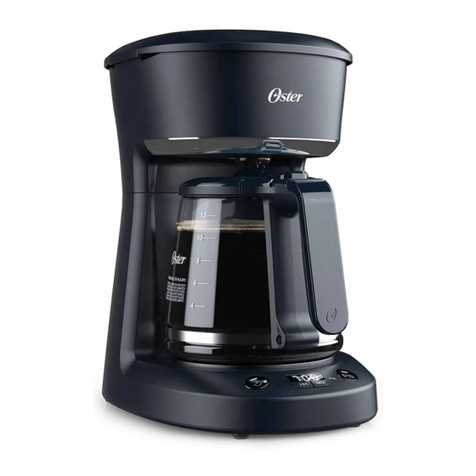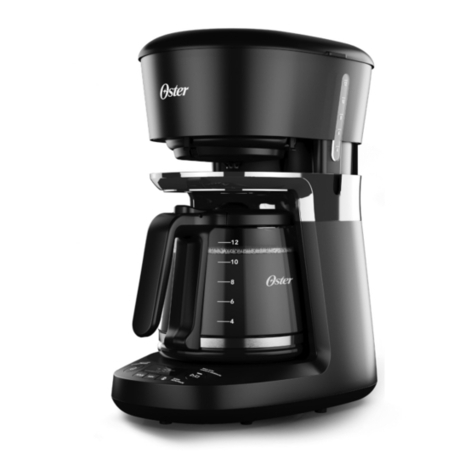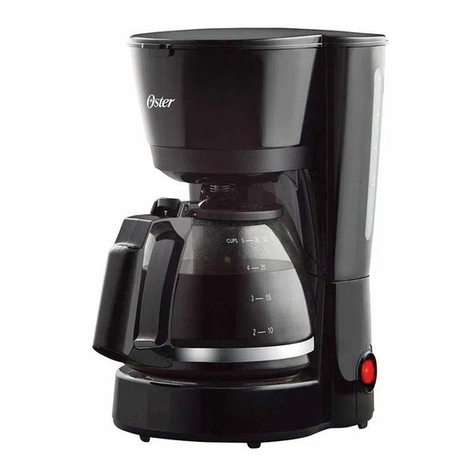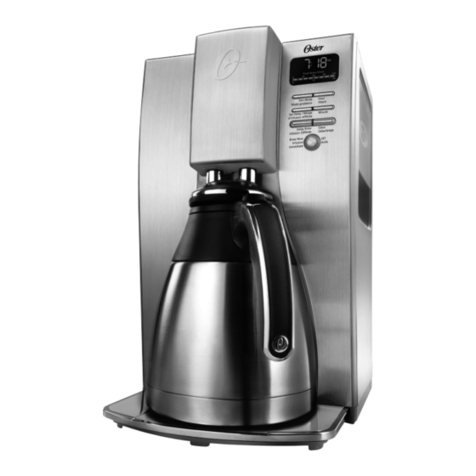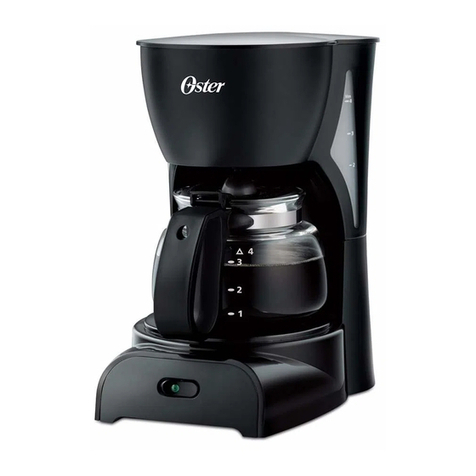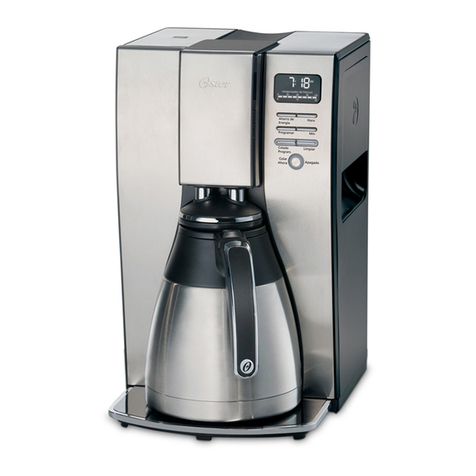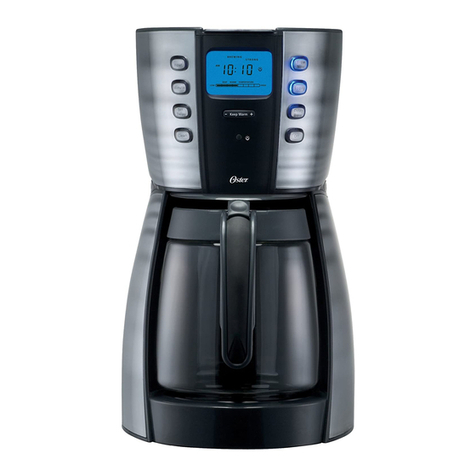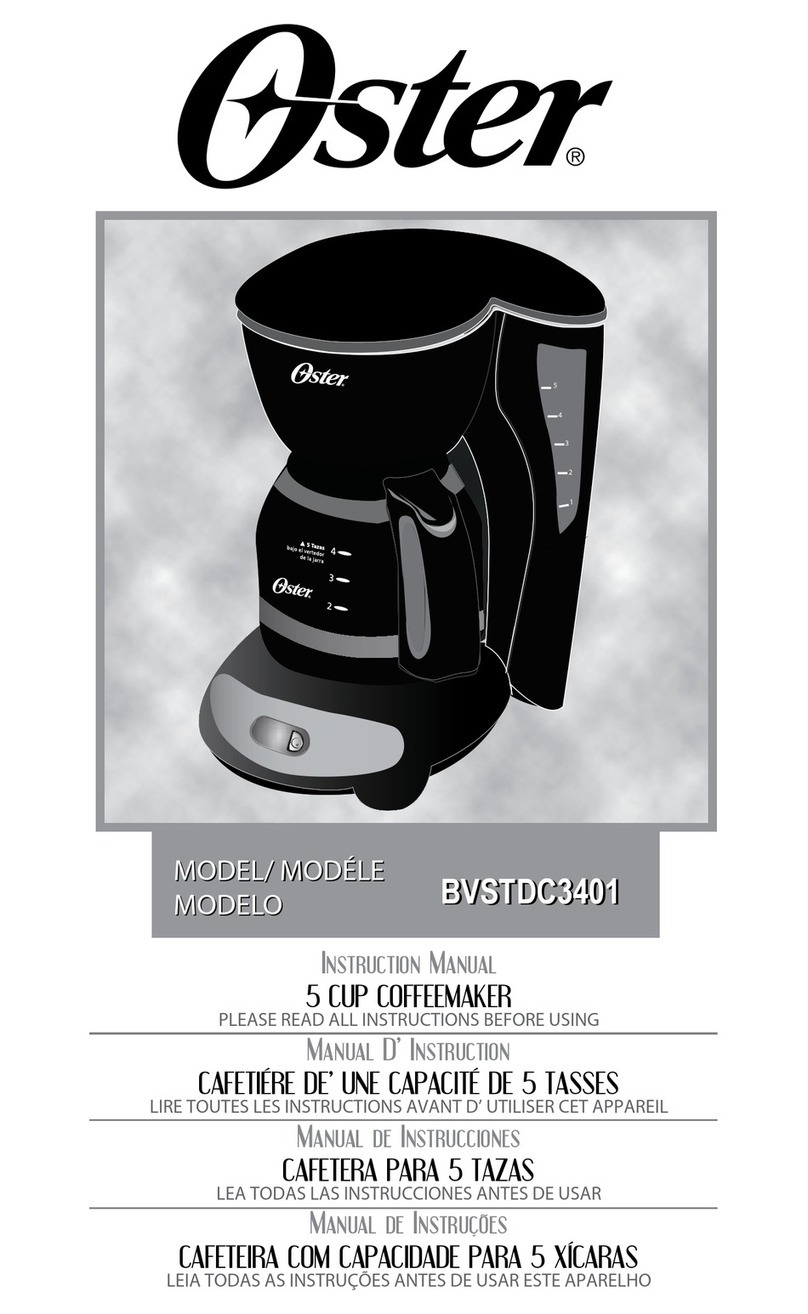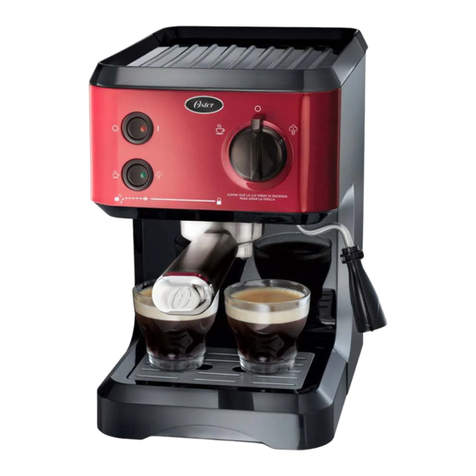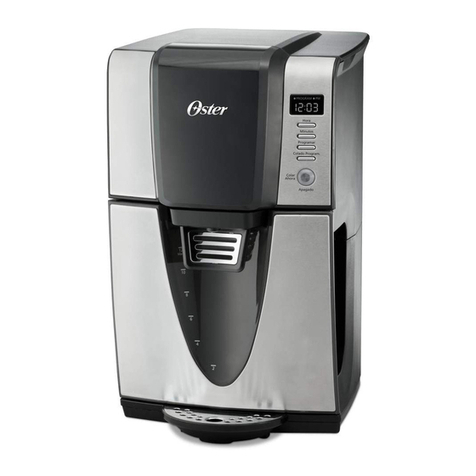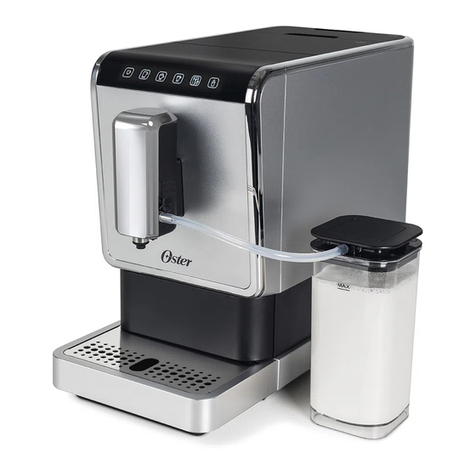
English-8
6. When the milk has doubled in volume, or, if you are using a beverage thermometer,
when the milk has reached 38°C (100°F), insert the frothing aid deeper into the milk
to further heat the milk. Do not heat milk above 65°C (150°F). To avoid splattering of
hot milk, do not let the frothing aid go above the surface of the milk. After frothing is
completed, turn the control knob back to the off position ““ ”.
7. You are now ready to make cappuccino. REMEMBER: It is 1/3 espresso, 1/3 steamed
milk and 1/3 frothed milk. Pour the espresso into a cup, which has the capacity of
at least 150 mL (5 ounces). Then add the steamed milk to the espresso and spoon on
the frothed milk.
8. Follow the instructions on Page 4 under section marked “CAUTION: PRESSURE” to
ush out any residual milk from the frothing tube. It is important to properly clean your
frothing tube after each use to ensure it continues to work properly. (See Step 2 below)
9. Unplug the power cord and allow the machine to cool. Do not remove the reservoir
cap or brew head until the pressure in the machine has been released. Follow
procedures in section marked “CAUTION: PRESSURE” on Page 4 to relieve the
pressure.
CLEANING AND MAINTENANCE
1. Turn the unit to off position ““ ” and unplug the power cord from the electrical outlet.
2. The frothing tube may still be hot. Do not touch it with your hands until it has cooled.
Remove frothing aid and wipe frothing tube with a damp cloth. Using the wrench built
into the measuring spoon, unscrew the frothing aid and clean valve with a needle or
toothpick.
3. The carafe, carafe lid, lter, brew head and drip tray can be washed with soapy water
or placed on the top rack only of your dishwasher. CAUTION: Do not immerse
appliance in water. Do not remove reservoir cap or brew head while appliance is
under pressure. See Section “CAUTION: PRESSURE” on Page 4.
4. After the pressure has been released, remove reservoir cap. Discard the remaining
water through the top opening of the water reservoir by turning the appliance upside
down over the sink. Always empty the water reservoir between uses. Do not immerse
appliance in water. Screw the reservoir cap back in place.
5. Wipe housing with a soft wet cloth. Do not use abrasive cleaners or scouring pads
as they will scratch the nish.
6. Do not store the lter holder in the brew head. This can adversely affect the seal
between the brew head and the lter holder while brewing espresso.
DELIMING
Mineral deposits built-up in the Espresso Maker will affect the operation of the appliance.
Your Espresso Maker must be delimed when you begin to notice an increase in the time
to brew espresso, or when there is excessive steaming. Also, you may notice a build-up
of white deposits on the surface of the brew head.
The frequency of cleaning depends upon the hardness of the water used. The following
table gives the suggested cleaning intervals.
SUGGESTED CLEANING INTERVAL
Type of Water Cleaning Frequency
Soft Water (Filtered Water) Every 80 Brew Cycles
Hard Water (Tap Water) Every 40 Brew Cycles

